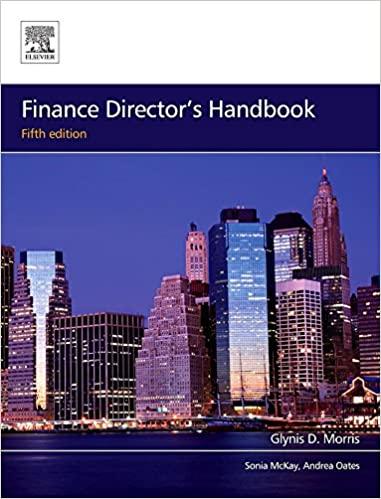152 B D E G H 39 40 BONUS: APPLICATION OF THE DISCOUNTED CASH FLOW APPROACH WHEN GROWTH IS NOT CONSTANT 41 142 As we noted earlier, analysts often provide non-constant estimates of future growth. We can use a modification of the discounted cash 143 flow valuation procedure for non-constant growth from Chapter 8 to estimate the cost of equity. 145 446 Suppose the current dividend is $2.16 per share and the current actual price that we observe is $32.00 per share. Analysts forecast growth 147 of 11% the first year, 10% the second year, 9% the third year, 8% the fourth year, and 7% thereafter. Estimate the cost of equity. 148 149 Stop 0: 150 Enter an initial "guess" for the cost of equity (r) In Step 4 below. Note: Your "guess" must be greater than the long-term growth rate of 7%, 151 or the constant growth formula will not be valid. 153 Stap 1: 154 Create a time line showing the expected future dividend payments. These are based on the current dividend and the estimated growth 155 rates 156 157 Year 5 158 Growth 159 Dividend 160 161 Step 2: 162 Using the constant growth formula from Chapter 8 to estimate the price at Year 4: P.-D./16.-9). Notice that D, and g are given in the 163 timeline above, but the estimate for r, is shown below (Step 4). 164 165 Price at Year 4 - 168 167 Step 3: 168 189 Calculate the current price of the stock, based on the estimate oft, below. To do this, find the present value of the price at Year 4, P., and 170 then find the present value of the dividends from Year 1 through Year 4. Use the cost of equity shown below, as the discount rate. 172 Calculated Current Price 173 174 Step 4: 175 176 Use Goal Seek to determine the cost of equity, r, shown below. Click Data tab (What-1 Analysis), Goal Seek and set the value of the 177 Calculated Current Price, cell C172, equal to the actual current stock price of 532 by changing the cost of equity, T., in cell B180. Note: You 178 must begin with a value in cell B180 that is greater than the long-term growth rate of 7%, or the constant growth formula will not be valid. 179 180 181 Note: you must begin with a value that is greater than the long-term constant growth rate. 182 11 13 Situation During the last few years, Jana Industries has been too constrained by the high cost of capital to make many capital investments. Recently, though, capital costs have been declining, and the company has decided to look seriously at a major expansion program that has been proposed by the marketing department. Assume that you are an assistant to Leigh Jones, the financial vice president. Your first task is to 0 estimate Jana's cost of capital. Jones has provided you with the following data, which she believes may be relevant to your task: 12 (1) The firm's tax rate is 35%. 14 (2) The current price of Jana's 11% coupon, semiannual payment, noncallable bonds with 15 years remaining to maturity is $1,153.72. Jana 15 does not use short-term Interest-bearing debt on a permanent basis. New bonds would be privately placed with no flotation cost. 16 (3) The current price of the firm's 10%, $100 par value, quarterly dividend, perpetual preferred stock is $116.95. Jana would incur flotation 17 costs equal to 5% of the proceeds on a new issue. (4) Jana's common stock is currently selling at $50 per share. Its last dividend (D) was $3.10, and dividends are expected to grow at a constant rate of 5.8% in the foreseeable future. Jana's beta is 1.2, the yield on T-bonds is 5.6%, and the market risk premium is estimated to 19 be 6%. For the own-bond-yield-plus-judgmental-risk-premium approach, the firm uses a 3% judgmental risk premium. 20 (5) Jana's target capital structure ls 35% long-term debt, 10% preferred stock, and 55% common equity. 22 To help you structure the task, Leigh Jones has asked you to answer the following questions. 18 21 23 24 25 .. (1.) What sources of capital should be included when you estimate Jana's weighted average cost of capital (WACC)? 27 Answer: Bonda, Preferred Stock, and Common Stock 26 28 29 31 30 (2.) should the component costs be figured on a before-tax or an after-tax basis? 32 Answer: The component conts should be figured on an after-tax basis. (3.) Should the costs be historical (embedded) costs or new (marginal costs? 37 Answer: The costs should be the new marginal costs. 35 38 39 b. What is the market interest rate on Jana's debt and what is the component cost of this debt for WACC purposes? 41 COST OF DEBT








